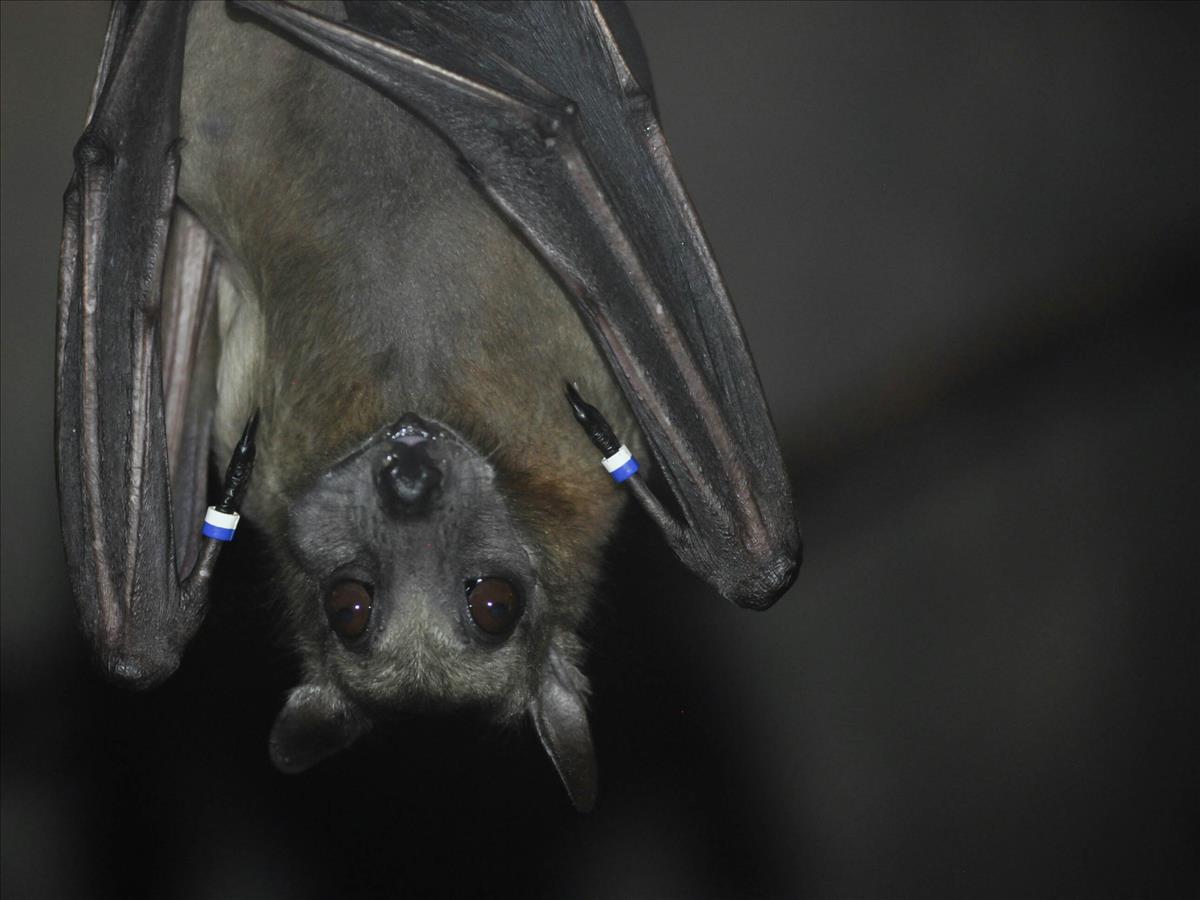Viewable


Mammal
Location at the Zoo
African Rainforest
Global Range
Africa
Straw coloured fruit bat
Eidolon helvum
Order: Chiroptera
Family: Pteropodidae
Genus: Eidolon
These bats are yellowish-brown to tawny on their necks and backs, with olive to brown on their undersides. There is an orange ruff of fur on the males. These second-largest African fruit bats have pointed heads, large eyes and large ears. Their long tapered wings are black, ending in a pointed tip. They also have large cheeks with pouches to store food. Their bodies measure between 14 and 22 cm with a short tail of 4 to 20 mm. Their wingspan can be an impressive 76 cm or greater. They weigh on average 230 - 350 g.
Conservation Status: IUCN

Distribution
Africa, south of the Sahara, north into Ethiopia and Egypt, as well as southwestern Arabia.Habitat
They can be found in a variety of habitats - forest, rainforest, savanna, desert, or dry arid regions, from sea level to 2000 metres. Prefers tropical forests due to the proximity of food sources. This species usually roosts in tall trees by day, but can also be found in caves.Diet
Juices of various fruits are their preferred food, including, but not restricted to, dates, baobab flowers, mangoes, pawpaws, avocado, figs, and passion fruit. This bat also feeds on blossoms and perhaps young shoots of the silk cotton tree, and will also eat into soft wood and bark probably to obtain moisture. They hang by the phalanges on their feet in order to suck the juice out of the fruit and discard the pulp.Reproduction
Reproductive cycles are geared to rainfall patterns, so young are weaned when conditions are optimal and food is plentiful. Mating occurs from April to June, when the dry season begins. However, unless conditions are ideal, implantation can be delayed in most populations. The gestation period can be as long as nine months, although the embryo takes only four months to develop.Birth occurs in February and March when the females give birth to one pup weighing about 50 g. Although there are many births at the same time in a colony, there is no record of cooperative care amongst the mothers or of paternal involvement in looking after the young. The pups are altricial, unable to fly and dependent on their mothers. They nurse on rich milk for up to four months until they become able to forage on their own. Weaning then occurs at the peak of the wet season when food is abundant. Sexual maturity is reached at about two years. These bats can live up to 15 years in the wild, longer in captivity.












